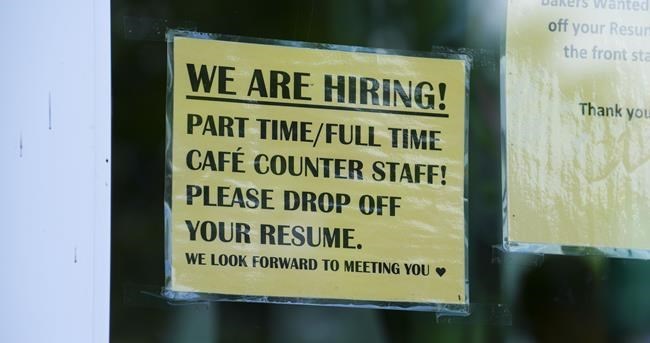Victoria’s unemployment rate rose in November to 4.1 per cent, mirroring the trend across the country.
sa╣·╝╩┤½├Į’s unemployment rate continues to trend higher as the Bank of sa╣·╝╩┤½├Į’s steep interest rate hikes weigh down the economy and leave workers with fewer options in the job market.
According to Statistics sa╣·╝╩┤½├Į’s monthly labour force survey, released Friday, the national jobless rate rose to 5.8 per cent and the economy added a modest 25,000 jobs, slightly surpassing forecasters’ expectations, but trailing behind the pace of population growth.
In Victoria, the total number of people employed increased over the last 12 months to 231,700 from 215,500 but the unemployment rate still jumped to 4.1 per cent from 3.8 per cent in October of this year.
The construction industry in the area shed 2,900 jobs over the past 12 months, though employment numbers in most other sectors held steady.
Public administration added 11,800 positions over the past year and health care added 5,400.
The rising unemployment rate nationally, coupled with Thursday’s weak GDP numbers, reinforces economists’ belief that the Bank of sa╣·╝╩┤½├Į will continue to hold its key interest rate steady at its decision meeting next week.
Manufacturing and construction saw the largest gains in employment, while the most jobs were shed in wholesale and retail trade as well as finance, insurance, real estate, rental and leasing.
The unemployment rate was 5.7 per cent in October.
After the labour market experienced a strong bounceback from the pandemic, the unemployment rate has been on an upward trend since April as the Canadian economy shows clearer signs of weakness.
Real gross domestic product — which measures the size of the economy — has been struggling to consistently grow over the past year. The most recent GDP report showed the economy shrank 1.1 per cent on an annualized basis in the third quarter.
“Partially echoing yesterday’s GDP report, sa╣·╝╩┤½├Į’s economy is hanging in, but the clear softening in the labour market is consistent with continued soft growth,” Benjamin Reitzes, BMO’s managing director of Canadian rates and macro strategist, wrote in a client note.
“While the headline [employment] increase was better than expected, the ongoing increase in the unemployment rate is the bigger story, and likely better reflects the state of the economy.”
sa╣·╝╩┤½├Į’s unemployment rate is now hovering around pre-pandemic levels but is expected to continue rising as higher borrowing rates weigh on businesses.
“The increase hasn’t been that large to date, but it is the kind of increase that typically you only see at the start of a labour market downturn,” said Nathan Janzen, RBC’s assistant chief economist.
Most forecasters have been convinced for a while that the Bank of sa╣·╝╩┤½├Į is finished raising interest rates — barring unexpected stubbornness in inflation. Now, many of them are trying to gauge whether the economy is weakening enough to justify rate cuts.
The central bank’s next interest rate announcement is set for Wednesday and comes after it opted to hold its key rate steady at five per cent during the last two decision meetings.
“They’ve probably done enough in terms of interest rate hikes and the next move, eventually, when it comes will be a cut rather than another increase,” Janzen said.
Many commercial banks, including RBC, expect Bank of sa╣·╝╩┤½├Į to start cutting interest rates next year. But Janzen says the central bank is in no rush to switch gears, given inflation is still above the two per cent target.
sa╣·╝╩┤½├Į’s inflation rate fell to 3.1 per cent in November.
The weaker job market also means more workers are finding themselves unemployed due to layoffs. Friday’s report says unemployed people last month were more likely to have been laid off compared with a year ago.
Despite those trends, however, average hourly wages continued to grow quickly — rising 4.8 per cent from a year ago — as workers seek compensation for the recent runup in inflation.
Janzen says the strong wage growth, while a potential risk to the Bank of sa╣·╝╩┤½├Į’s inflation-fighting efforts, largely reflects workers trying to recoup lost purchasing power.
“Wage growth for a long time was trailing well behind inflation. And so there’s an element of catch-up here, still, where wages are catching up to inflation, and not the other way around,” Janzen said.
“But under the surface it still looks like that demand-supply balance for labour is starting to move more in favour of businesses in wage negotiations, rather than workers.”
— With files from The Canadian Press



